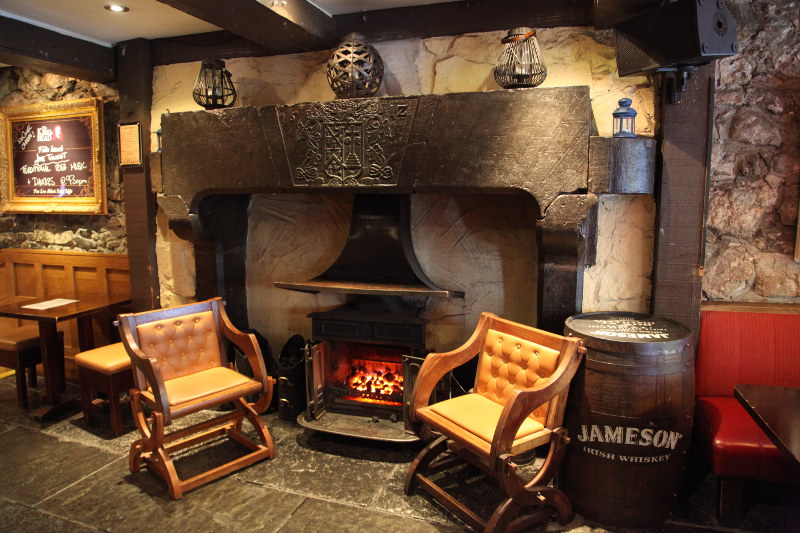The Kings Head was one of the few Galway sites we knew of before arriving in the city… apparently, it has a bit of a reputation. However, the real reason we knew about the pub was that it’s known for its evening Irish dancing and by this point in our journeys, La Niña wanted to know everything about Irish dancing. In this case, however, it didn’t work out because dancing at the Kings Head doesn’t start until 10pm, and kids need to leave by 9pm.
The pub is not hard to find; as you meander down the medieval streets, it’s one of the only bright red buildings on High Street. As it turns out, we weren’t the only ones looking for it because on the way back to the hotel (after) we were stopped a few times by people looking for the building (we were carrying Irish Stew from the pub).
The pub used to be a house and has ties to the original families who founded Galway (often referred to as the 14 Tribes of Galway). Proof of this rests above two fireplaces that were uncovered accidentally during renovations in the 1990s and 2000s. Now featured prominently, these fireplaces show marriage stones from three of the 14 families: Martin, Bodkin and Lynch.
As a house, the Kings Head has a rather dubious history, which is reflected in its name. Remember King Charles I, Cromwell, and Charles II? Well, Charles, I was executed by Cromwell at Whitehall Palace on January 3, 1649. However, it was no easy feat to find someone who was willing to execute the King. The London City executioner at the time refused to carry out the task, and this refusal soon spread throughout England. In a desperate attempt to find someone who would behead the King, Crowell sent messengers to Ireland, Scotland, and Wales to find a volunteer.
Someone was eventually found, but his identity was kept secret. For many years it was thought to be a man named Richard Gunning who lived in Galway until recent evidence suggests that Peter Stubbers, one of Cromwell’s henchmen, was the executioner.
After the King’s execution, Stubbers led an army to Galway and laid siege to the city. After Galway’s surrender, Stubbers became it’s de facto mayor of the city and took the Kings Head (when it was a house) as his prize. And… this is why the pub is called The Kings Head.
All this history aside, the establishment was a very nice place to spend an evening. We sat by one of the “discovered” fireplaces (1612) and listened to Irish music while eating meat and cheeses from a trencher much like locals would have done in the 1600s.
